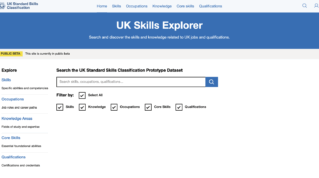Every corner of the skills system has its own crisis. Falling apprenticeship vacancies. Too few T Level placements. A shortage of entry-level jobs for young people. Almost a million 16–24 year old NEETs.
Each issue matters, but only tells part of the story. Employers sit at the heart of these challenges, yet policy treats them in isolation. What’s missing is a joined-up approach that recognises the cumulative effect on business and helps employers see how investing in skills can work for them.
Our members, representing employers of all sizes and sectors, tell us it’s not a lack of willingness to train or employ people but the sheer number of pressures hitting businesses at once.
Increased national insurance, record national minimum wage, escalating materials, energy and transport costs. A higher retirement age keeping the workforce older for longer while the cost of reskilling rises. Add to that the cost-of-living crisis, and many employers are operating with tighter margins and being asked to do more.
AI and automation is changing the nature of work, with a growing demand for digital, data and problem-solving skills. Employers are trying to adapt while keeping their businesses viable.
A record 252 employers took part in this year’s 5% Club audit, representing more than 800,000 employees across 20 industries. Together, they employ over 70,000 people in “earn and learn” roles such as apprenticeships and graduate schemes – 8.7 per cent of their workforce, the highest proportion we’ve ever recorded. Employers remain committed to developing talent, even when times are tough.
For the fifth-year running there’s been a rise in higher and degree-level apprenticeships, typically supporting mid-career reskilling and upskilling – exactly what employers tell us they need most.
But with young NEET numbers growing, government focus is weighted heavily towards this issue. The young population is growing and will continue to do so in the next five years, so we may see NEET levels grow even further.
Employers can ‘t solve this challenge alone. Entry-level roles are declining. Level 2 apprenticeships are at their lowest since the audit commenced, and the expectation is employers will do more. We need to align national need with commercial reality. We have to make it make sense for business to get involved.
Beyond apprentices, for the third consecutive year, employers have reduced the number of formal graduate schemes and placements. The median number of graduates has fallen from 31 in 2024 to just 23 this year, and SMEs expect to cut graduate recruitment by another 6 per cent next year. As competition for graduate roles intensifies, many will apply for lower-level roles that non-graduates might once have secured, pushing those furthest from the labour market even further from opportunity.
Each new initiative – the youth guarantee, foundation apprenticeships or sector-based technical colleges – is created in silo. Employers have to navigate multiple schemes, funding and reporting requirements, each with their own rules and language. This fragmentation is holding everyone back.
For policymakers, it means every reform has to prove its worth just as the last one starts to settle. For employers, it means more time, money and effort spent navigating a maze of disconnected schemes. For SMEs, that’s near impossible. We will only create enough opportunities for young people if the system is easy for all employers to engage with. Right now, it isn’t.
The problem isn’t just fragmentation; it’s continued change. Apprenticeships are key to many employers’ long-term workforce strategies. We’ve come a long way in building the apprenticeships brand, and further reform cannot undo that work. Wide scale change risks undermining that progress and damaging confidence in both funding stability and programme quality.
It isn’t all doom and gloom. Where employers do engage, results are impressive. More than three-quarters of audited employers reported apprenticeship achievement rates above 90 per cent. Employers going beyond the minimum, investing beyond their levy funds, sharing good practice with other employers and making their apprentices feel they matter, see higher achievement and lasting loyalty.
We need to change the conversation. Instead of designing separate interventions for apprenticeships, T Levels, work experience, bootcamps, apprenticeship units, V Levels or adult learning, we need a single, connected narrative that meets skills needs.
Only then will we unlock the scale of employer participation needed for a truly sustainable, inclusive and future-ready workforce.















Your thoughts